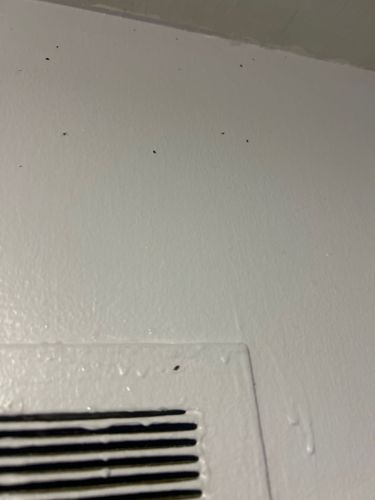Springtail (likely a type of Collembola, specifically the 'Globular Springtail' or 'Mushroom Springtail' based on shape, but difficult to definitively identify species from image)
Scientific Name: Various species within Collembola, e.g., Sminthurus viridis (Lucerne Flea) for a common globular type, but exact species cannot be determined from the image.
Order & Family: Order: Collembola (though sometimes considered a class or subclass, within Arthropoda). Family: Often Sminthuridae or Bourletiellidae for globular springtails, but specific family identification without microscopic examination is difficult.
Size: Typically very small, ranging from 0.2 mm to 5 mm, but most commonly 1-3 mm. The individuals in the image appear to be on the smaller end of this range, likely around 1-2 mm.

Natural Habitat
Damp, humid environments with decaying organic matter, such as soil, leaf litter, rotting wood, compost piles, under mulch, potted plants, and sometimes indoors in bathrooms, basements, and kitchens where moisture and mold are present.
Diet & Feeding
Mainly feed on decaying organic matter, fungi, algae, bacteria, mold, and sometimes plant roots or pollen. They are detritivores and saprophytes.
Behavior Patterns
Springtails often appear in large numbers, especially after rainfall or in humid conditions. They are known for their ability to jump using a furcula, a spring-like appendage on their abdomen, though they do not always jump when disturbed. They are typically found in damp environments and are attracted to moisture and decaying organic matter. They are not known to be strongly attracted to light.
Risks & Benefits
Springtails are generally harmless to humans and pets, as they do not bite, sting, or transmit diseases. They are considered nuisance pests when they appear in large numbers indoors, but do not cause structural damage. Ecologically, they are beneficial decomposers, playing a crucial role in nutrient cycling and soil health by breaking down organic matter and controlling fungi and molds. They can occasionally be problematic in agricultural settings if they feed on delicate seedlings, but this is rare compared to their beneficial activities.
Identified on: 8/19/2025